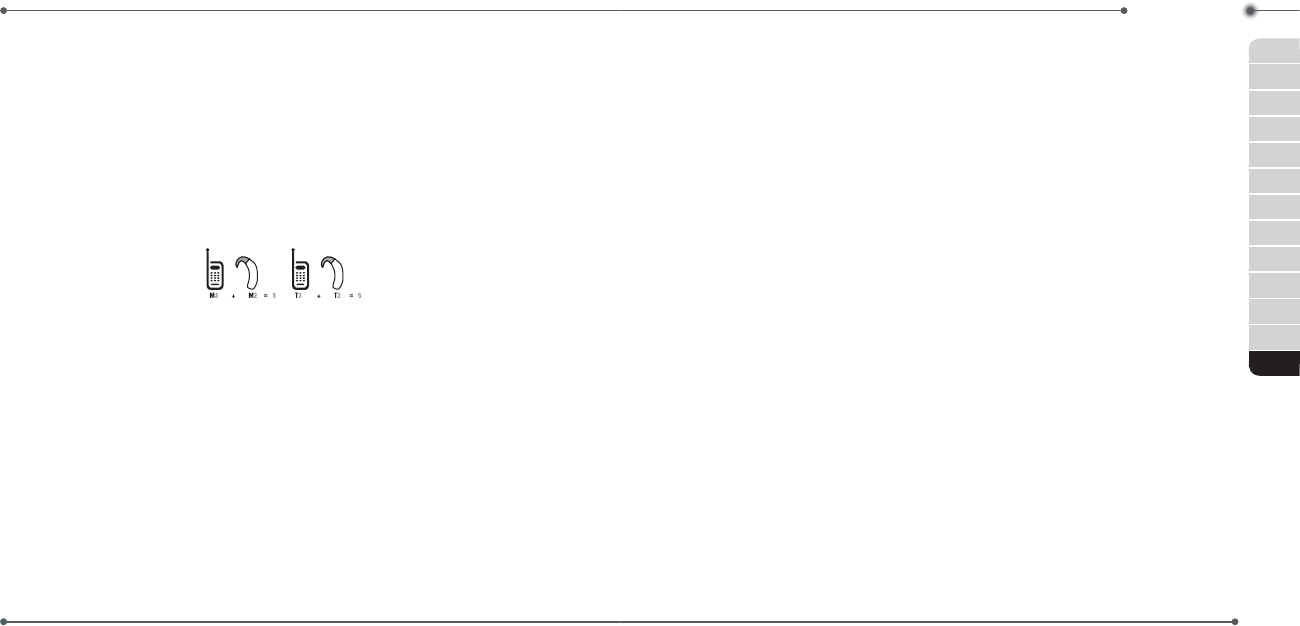User Guide

180 181
Appendix
03
04
05
06
01
02
03
04
05
06
07
01
02
labeled. M4 is the better/higher of the two ratings.
• T-Ratings: Phones rated T3 or T4 meet FCC requirements and are likely to
generate less interference to hearing devices than phones that are not
labeled. T4 is the better/higher of the two ratings.
Hearing devices may also be rated. Your hearing device manufacturer or
hearing health professional may help you nd this rating. Higher ratings mean
that the hearing device is relatively immune to interference noise. The hearing
aid and wireless phone rating values are then added together. A sum of 5 is
considered acceptable for normal use. A sum of 6 is considered for best use.
In the above example, if a hearing aid meets the M2 level rating and the
wireless phone meets the M3 level rating, the sum of the two values equal
M5. This is synonymous for T ratings. This should provide the hearing aid user
with “normal usage” while using their hearing aid with the particular wireless
phone. “Normal usage” in this context is dened as a signal quality that is
acceptable for normal operation.
The M mark is intended to be synonymous with the U mark. The T mark
is intended to be synonymous with the UT mark. The M and T marks are
recommended by the Alliance for Telecommunications Industries Solutions
(ATIS). The U and UT marks are referenced in Section 20.19 of the FCC Rules.
The HAC rating and measurement procedure are described in the American
National Standards Institute (ANSI) C63.19 standard.
To ensure that the Hearing Aid Compatibility rating for your phone is
maintained, secondary transmitters such as Bluetooth and WLAN components
must be disabled during a call. See page 152 for instructions to disable these
components.
FCC Regulatory Compliance
FCC Regulatory Compliance
This device complies with Part 15 of the FCC Rules. Operation is subject to the
following two conditions: (1) this device may not cause harmful interference,
and (2) this device must accept any interference received, including
interference that may cause undesired operation.
Your mobile device is a low power radio transmitter and receiver. When it is
ON, it receives and also sends out radio frequency (RF) signals.
In August 1996, the Federal Communications Commission (FCC) adopted RF
exposure guidelines with safety levels for mobile devices.
Those guidelines are consistent with safety standards previously set by both
U.S. and international standards bodies: American National Standard Institute
(ANSI), National Council of Radiation Protection and Measurements (NCRP),
and International Commission on Non-Ionizing Radiation Protection (ICNRP).
Those standards were based on comprehensive and periodic evaluations of the
relevant scientic literature. The design of your phone complies with the FCC
guidelines and applicable.
Statement according to FCC part 15.105
NOTE: This equipment has been tested and found to comply with the limits










